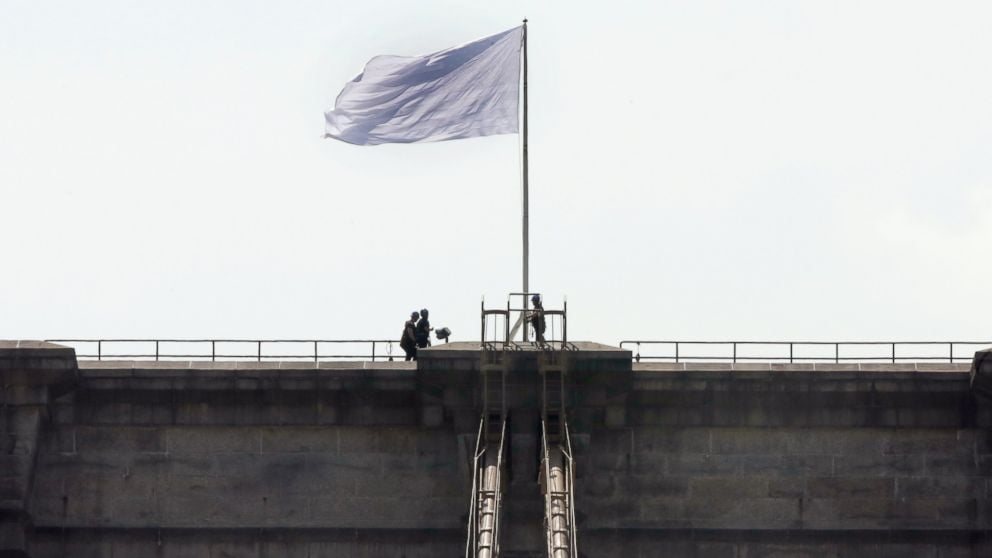
Almost three weeks ago, New Yorkers awoke to find that the pair of American flags traditionally perched atop the Brooklyn Bridge had been replaced with white ones. The new flags were hand-stitched with stars and stripes, but all-white nonetheless, and immediately sparked rumors of terrorist activity.
The symbolism of white flags, often used to communicate surrender, tipped the New York Police Department (NYPD) off to the idea that it was the work of an artist or activist, rather than a terrorist. However, these suspicions remained unconfirmed until August 12, when two Berlin-based artists, Mischa Leinkauf and Matthias Wermke, admitted to carrying out the act.
In a series of phone interviews with the New York Times, the duo said that the flags had nothing to do with terrorism, and in fact were meant to be a celebration of “the beauty of public space,” as well as the iconic American bridge, whose German engineer, John Augustus Roebling, died in 1869 on July 22, the day the flags appeared.
Other groups have attempted to take responsibility for the action prior to the artists’ confession (a Twitter-based jokester called @BicycleLobby, and a California-based co-founder of the “Pot Party” are among the most notable), but given that the pair has photos and short videos seemingly shot from atop the bridge during and after installation, it looks like they’re the real deal.
In the interview, the German artists seemed shocked by the hullabaloo their artistic action set into motion.
“From our Berlin background, we were a little surprised that it got the reaction it did…Of course, we did not have the same problems with terrorism,” Leinkauf told the Times.
The artists crafted the flags themselves, and stressed that when they handled them, they used proper United States flag code. They have done other projects in public spaces around the world with the intent of calling into question the blurred lines between public and private. Not only have their actions never garnered this level of attention, they often go unnoticed.
Regardless of their seemingly good intentions, it remains to be seen what the consequences will be for the pair, who insist they intended to come forward from the start. Stephen Davis, the NYPD’s chief spokesman, said: “If they want to come in and speak with us, we certainly would be more than happy to entertain them.”
In answer to the question on every art lover’s mind—Did Jasper Johns’s famous 1955 work White Flag inspire the stunt?—the duo said: “Johns painted objects of daily life, like flags. We are not comparing ourselves to Jasper Johns. But we do see buildings, bridges, and so on as the architecture of daily life, which often goes unnoticed.”